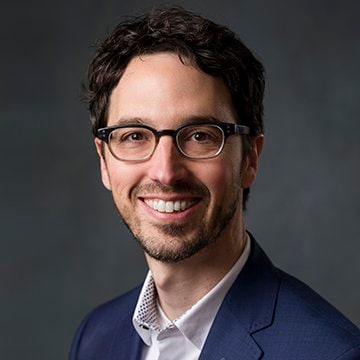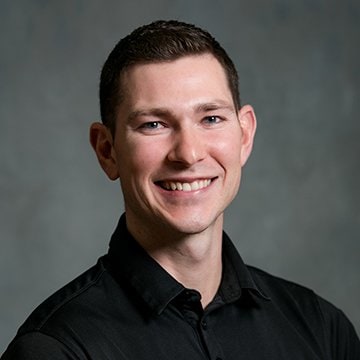
ACL injuries: What you need to know
Just 25 seconds into a preseason match in 2017, Mandi Duggan knew something was wrong. The University of Kansas soccer player hadn’t made contact with anyone but instinctively knew that she’d damaged her ACL.
The anterior cruciate ligament, more commonly known as the ACL, is a ligament located in the center of the knee which connects the femur (thighbone) to the tibia (shinbone) and controls movements of the tibia. Without an ACL, the knee would not be stable, which would cause uncontrollable movement of the lower leg. The ACL is used in everyday activity, especially in physical activities such as sports that require frequent and sudden deceleration.
Duggan isn’t alone. According to the Centers for Disease Control and Prevention, ACL injuries affect as many as 250,000 Americans each year. Women tend to be more at risk than men because of differences in strength, anatomy and genetics. Although ACL injuries may occur at any age, they most commonly affect 15 – 45-year-olds due to their level of physical activity.
“It was such an odd feeling, and I knew what had happened right away, even though I’d never torn my ACL before,” Duggan said.
What causes an ACL injury?

Stephan Prô, MD
Stephan Prô, MD, a sports medicine physician and orthopedic surgeon at OrthoKansas, said most ACL injuries occur with a pivoting or twisting motion where the foot is planted and the body twists and turns a different way.
ACL injuries most commonly occur through sports and physical activities such as basketball, volleyball, soccer and football. In addition to pivoting and twisting motions, stopping movement suddenly, changing movement rapidly, or landing from a jump or collision incorrectly can all cause potential risk to your ACL.
“We see ACL injuries within all age groups,” said Dr. Prô. “The vast majority of ACL tears are associated with sports injuries including jumping, landing and twisting movements. There are also occasions when someone will injure their knee during everyday life activities such as a slipping on ice or falling from ladder.”
How can you tell your ACL is injured?
Individuals with an ACL injury can face a variety of symptoms related to the tear. These include:
- The sound of a popping noise while moving your knee
- Discomfort while moving your knee
- Pain and swelling in your knee area
- Inability to move the knee as normal
- Tenderness along the joint line
If you experience any of these symptoms, it is important to seek medical treatment before they worsen. Dr. Prô shared that in his experience treating ACL injuries, he has seen both patients who want immediate medical attention, and others who have experienced a chronic history with an injured ACL.
“The majority of patients present to the clinic within a few days of an injury, but we also see patients who present weeks to months after their injury. The most common symptom that we see in the case of a chronic ACL tear is instability or overall lack of confidence in the knee. In either case, the diagnosis is made by a combination of clinical examination and MRI findings,” said Dr. Prô.
When Duggan crumpled to the ground, the team’s athletic trainer picked her up and carried her into the training room. She didn’t have to wait long for medical treatment, as Dr. Prô was already there as the team physician covering the match.
“Dr. Prô immediately comforted me,” she said. “I knew something bad had happened, and even though I hadn’t had any experience with him, I immediately knew I could trust him. He made the whole process really easy.”
Treating your injury
According to the American Academy of Orthopedic Surgeons, there are different levels of injuries when it comes to your ACL, otherwise known as “sprains.”
- A Grade 1 sprain occurs when the ACL is only slightly stretched.
- A Grade 2 sprain occurs when the ACL is stretched to the point where it becomes loose. This is known as a partial tear of the ligament.
- A Grade 3 sprain occurs when the ACL is completely torn in half, causing instability in the knee. This is the most common of the three types of sprains.
There are two main options to treat your ACL injury, depending on which one better suits your lifestyle. The majority of patients want to remain active post-surgery, so in an effort to return to doing jumping and twisting sports, Dr. Prô would recommend undergoing surgery.
“About 95% of patients have surgery, but some opt for non-operational treatment which is always available for discussion,” he said.
The typical surgery for an ACL injury is done on an outpatient basis, meaning that the patient has surgery and returns home for recovery within the same day. The procedure, also called reconstruction, is done in order to return the ligament to its peak ability of function. If patients opt for non-operative treatment, it consists of aggressive physical therapy, bracing and activity modifications.
After the reconstruction is completed, patients leave the hospital on crutches and use them for approximately two to three weeks until they are comfortable without their aid. All post-reconstruction restrictions depend on the severity of the case and the type of injury that occurs. For example, some patients may be on crutches and some may undergo physical therapy longer than others. Your doctor will keep you on a recovery schedule that is best for your body. It takes approximately six to nine months for patients to fully recover and return to their full athletic ability. OrthoKansas uses objective measurements with strength, power and range of motion that will help guide an athlete’s return to play, as opposed to using a strictly time-based recovery date.
Duggan opted to take the surgical route. The procedure was scheduled within a week of her injury. When she woke up from surgery, Dr. Prô was there to check on her.
“I can’t begin to tell you how amazing it was, knowing he was there and he cared,” she said. “He even carved out time to see me the next day, which isn’t something that’s typical after an ACL surgery. I’d been so nauseous, unable to sleep and in pain the first night. When I called, he was willing to meet with me, adjust my medications and make me feel more comfortable. It was amazing.”
Recovery process
Physical therapy typically begins within a week of the reconstruction. It’s broken down into phases, with each phase meant to accomplish a different level of achievement in rehabilitation.

Tyrel Reed, DPT
Tyrel Reed, DPT, a physical therapist with LMH Health Therapy Services, said that in the early stages of physical therapy, the patient will come in two to three times per week to help re-establish their range of motion, normal walking mechanics, and basic strengthening.
“In the later stages, typically three months and on, we will decrease the frequency of sessions to one to two times per week, or even every other week,” Reed said. “During this stage, the patient will have a structured strength and conditioning program to help with the restoration of remaining deficits, in addition to their therapy sessions.”
Physical therapists at LMH Health work to help patients complete a full recovery. Reed shared how in the first month of physical therapy, physical therapists work to regain knee extension and improve quadriceps muscle activation in patients. After that is complete, they work to gradually restore knee flexion and range of motion while adding in more functional tasks such as walking, squatting and using stairs. Physical therapists continuously address remaining strength deficits in patients to promote a safe return to sport.
Duggan progressed through her rehab, working with Reed in the training room at the University of Kansas. She said he was an amazing therapist, even though she wasn’t the easiest patient. She was having a tough time getting the extension in her leg back and wasn’t in a great headspace.
“Dr. Prô would come into the clinic on Monday or Tuesday and check my recovery,” Duggan said. “I was in the training room thinking that I’d never get back to where I was. He sat down with me and said, ‘Look at me. You can do this.’ I needed someone to tell me it was going to be okay and he did that.”
Duggan said that she doesn’t recommend tearing your ACL, but if it happens to you, she knows that you’ll be in great hands with Dr. Prô and the team at OrthoKansas. “I can’t say enough about Dr. Prô and the care he provided. He was easy to connect with, and I immediately knew I could trust him,” she said. “He genuinely cared about me from the beginning and wanted to make sure I was able to doing what I love.”
Together, LMH Health and OrthoKansas provide the comprehensive and highly specialized orthopedic care you need to stay active and healthy. Turn to our experts for a consultation and treatment for your orthopedic health.